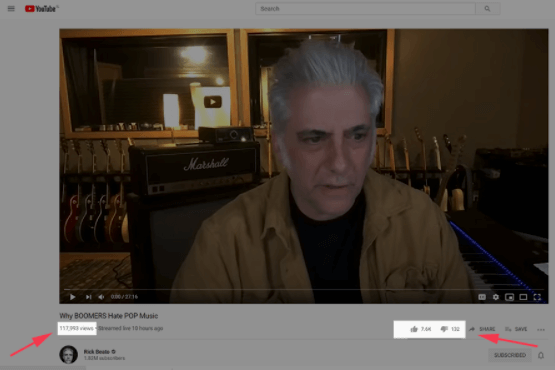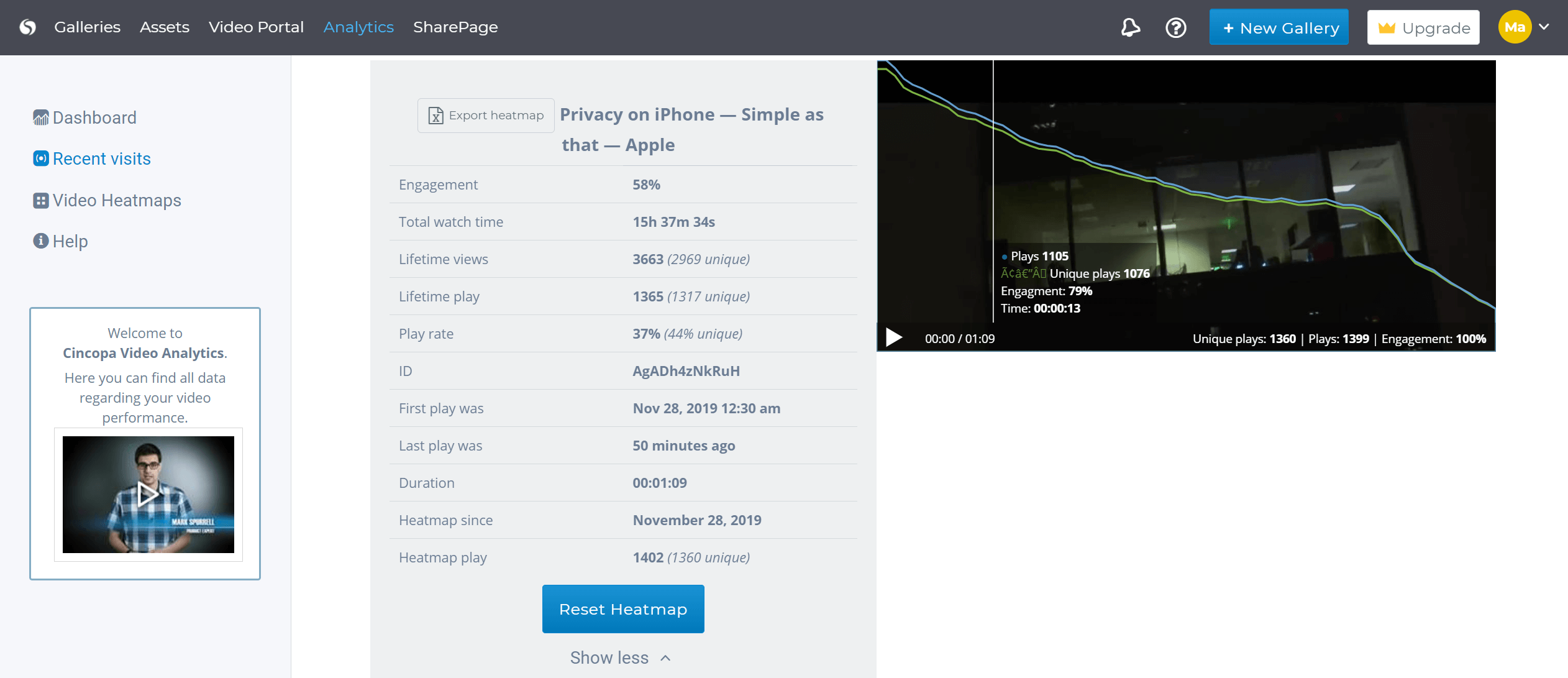
You can’t optimize video performance without capturing and analyzing the right data.
It’s a well-known fact that B2B professionals prefer video. A 2020 BrightTalk survey placed webinars, online courses, and short videos as the top three content formats favored by B2B professionals. 85% of the survey’s respondents preferred webinars above every other content type.
Most B2B marketers are already working towards a video-centric content approach. But only a few of them are optimizing their content using video analytics.
Video can generate valuable insights regarding user behaviors. Capturing key performance metrics from users is vital for any B2B marketing campaign. If you can’t measure your video’s results, you can’t improve them.
Choosing the right video hosting platform enables B2B marketers to take a data-driven approach. The ability to capture and analyze video engagement data turns video into a valuable strategic asset.
Simple analytics don’t generate value
Free video hosting solutions like YouTube and Facebook offer a very limited set of video engagement analytics. You can see how many views a video has, how many likes and dislikes it has, and not much else.
This data can be misleading. From a B2B perspective, a video with a million views isn’t necessarily more valuable than a video with a few thousand. If none of those million viewers convert, the video is just another missed opportunity.
Your video content only generates value when you show it to the right people at the right time. Advanced video analytics tells you exactly how to do that.

5 Video analytics metrics every B2B marketer needs to know
Advanced video analytics enable marketers to optimize videos for conversion. Here are some of the video metrics that successful B2B marketers use to do this.
1. Engagement Charts
Engagement charts expand on the information that view counters offer. YouTube counts a “view” as any intentional engagement that lasts more than 30 seconds. As a B2B marketer, you should be concerned about users who drop off after that.
If you’re hosting a series of hour-long webinars and a significant number of viewers leave after five minutes, something is missing:
- You may be promoting to the wrong audience.
- The webinar’s title may be misleading.
- Maybe your webinar content just isn’t compelling enough!
You won’t be able to find out what that motive is without detailed engagement data. Engagement charts give you an aggregated overview of audience engagement on a second-by-second basis.
With this metric, you can tell when viewers are dropping off or jumping ahead. Start optimizing your content by cutting out the fluff and putting your most compelling content at those key moments.
2. Device and geo-location metadata
Here is an obvious optimization you can implement right away. If most of your viewers are tuning into your video content on a mobile device, try shooting vertical video. This is just the tip of the iceberg when it comes to mobile video optimization for B2B.
If your audience is made up primarily of mobile users, there are lots of ways you can use geo-location metadata to your advantage. The holy grail of B2B marketing is getting the right content to the right people at the time. Knowing where your audience is when accessing your content brings you a step closer to reaching that goal.
You might also come across new opportunities to optimize video content. If a particular video is trending in a different country, you may wish to consider offering translated captions or creating content in a new language altogether.
3. Video embed locations and traffic sources
Partners, vendors, and enthusiastic users might be embedding your videos on their own websites. Your sales, promotional, or support content could be gaining traction outside of your video hosting solution.
If your video is embedded in more than one place, you’ll want to know. That information can prove vital towards optimizing your video content for the needs of a specific audience.
Knowing where your videos are embedded can also help you identify the factors that drive traffic to your content. Traffic source data can lead to significant insights in unexpected ways.
This is especially true when traffic spikes suddenly occur. B2B marketers with access to advanced video analytics tools can immediately find out what changed and why. From there, responding to the change in a way that improves conversions is simple.
4. Split testing conversion rates
Split testing is one of the most fundamental tests video marketers regularly perform. It has earned its place as one of the most valuable tools in the video marketing shed.
There are many ways to perform A/B testing. The more data you capture, the more detailed the results will be. If there is a difference in conversion rates between two near-identical videos, granular analysis will help identify that difference’s origin.
This is where the ability to drill down into specific split testing data sets becomes essential. Comparing split test conversion rates becomes far more useful once you have the tools to analyze precisely why minor differences in your videos result in significant earnings or losses.
5. Unique views and drop-off rates
Unique views work on a user-by-user basis. Any individual who accesses your video content counts as a unique view no matter how many times they push the play button. This key video analytics metric combines with engagement data to generate incredibly valuable insight.
This metric – actually, this combination of two metrics – offers insight similar to an email marketing campaign’s cold open rate. Combining these data tells you how many users saw your video for the first time and watched until the very end.As an added bonus, your engagement chart will tell you where the rest of your first-time viewers dropped off. This is akin to finding out the actual line where individual email recipients stopped reading.

Here’s a view of Cincopa’s heatmaps.
Aggregating a given video’s engagement rates, you can see if and when there are serious drop-offs in viewership.
Start gathering and analyzing viewer data today
Many B2B marketers treat videos as promotional tools, and nothing more. The fact is that video content can generate an extraordinary amount of data, ready for analysis. Implementing the right video hosting solution helps B2B marketers make the most of these advanced video analytics metrics.





